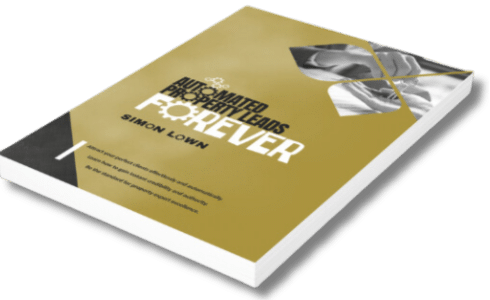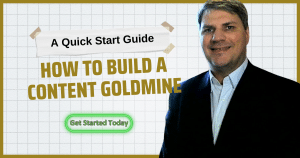SEO is more than just a buzzword; it is a crucial part of your strategy for getting in front of your perfect prospects when they decide the time is right. To answer the question, “What is SEO?” we can be literal and just say it’s Search Engine Optimisation; it doesn’t get much simpler than that. However, that’s not very helpful and doesn’t truly get to the heart of the matter.
To understand SEO, you need to know why it exists in the first place. As a way to attract leads, there is no better method, but there are a few conditions. Let’s look at what people usually do to attract leads and then figure out how SEO became what it is today.
Most people try to “attract” people to their businesses by paying for ads to pop up all over their local area. Ads can quickly cost a lot of money, with little to show for your efforts if you don’t know what you’re doing.

Yay! Another ad to ignore about why I “need” your service and how it will be so much better if I “act now”. To be clear, I’m not against ads, but they work so much better when you can already attract organic traffic.
Ads only amplify your message; they don’t fix anything except the problem of scaling quickly. If your message is a little off, instead of hundreds not paying attention, it will be thousands. Perhaps you’ve already experienced spending a small fortune on ads and getting precious little in return, certainly not any new clients. When you get to the end of this post, why that is the case will be much more apparent.
SEO is the best possible way to attract your audience. However, the one thing few people mention when telling you about the latest SEO tactic, tip, or trick that will get you the #1 spot on Google is the only thing that really matters. Don’t worry; I’ll reveal exactly what this is shortly.
To understand the purpose of SEO, all you need to understand is why it was created.
Ready for a mind-blowing revelation that will get SEO to finally make sense?
In case you weren’t paying attention, the reason that SEO exists is to:
GIVE PEOPLE WHAT THEY WANT
WHEN THEY WANT IT

That’s it.
The whole multi-billion dollar SEO industry can be summed up in those few words.
Google’s existence as a search engine is designed to give you precisely what you want, as quickly as possible, when you decide to search for something.
So, what’s all the fuss about?
Understanding the Basics of SEO
For Google or any other search engine to give you exactly what you want, they need to understand a few things when you search for it.
Understanding your intent is the first hurdle they face. This is one of the reasons that Google started working on Artificial intelligence (AI) in 2011, which was called “Project Relate” back then. Understanding what you want is the first step.
Next, they need to find matching content in their database to give you a list of relevant content to satisfy your query.
Makes perfect sense, right?
For example, if you search Google for “best estate agents” vs. “best estate agents near me”, you’ll get very different results. For the first search, you will get results based on how to find the best estate agents, whereas in the second, you clearly want to find the best agent near you.
If they can’t do this effectively, you might go somewhere else. In 2012, Google released their Hummingbird update, disrupting the search engine results pages (SERPs) for almost every subject available. Tens of thousands of websites lost hundreds of page 1 rankings overnight in favour of content deemed more appropriate by the new AI-assisted algorithms. Of course, the new #1’s probably weren’t complaining much.
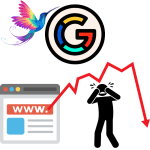
Today, when you search on Google, their algorithm can give you something that will almost certainly help you answer your query. This is because not only is the content analysed to understand what it is about, but it lets the people decide what is most relevant and tracks hundreds, if not thousands, of other metrics, all of which determine who gets the coveted number one ranking for each search.
This is part of why getting to that #1 spot is so tricky. It takes time to build credibility and authority, so the top spot doesn’t change very often for most keywords.
The Double Edge of SEO: Visibility and Credibility
To get found on search engines today, you need to have the one thing few people talk about when promoting SEO as a “free” way of getting traffic to your website.
For search engines to consider your content worthy of showing to a potential prospect, you must have credibility. But to get credibility, you need visibility.
If people aren’t finding, consuming, and engaging with your content, it won’t rise up the rankings. If your content can’t be found in the first place, how can people engage with it?
This is the big reveal.

You need expert content that’s easy to consume, deals with exact issues, or solves specific problems. The easiest way to ensure your content is shown to people searching for a problem you’ve solved is to show the search engines you’re a credible and authoritative source of information.
Unfortunately, this means that, at first, you’ll need to get eyeballs on your content from elsewhere. More on that coming up.
What Makes You Credible to Google?
Your website is the first stop on the road to credibility. Does it have everything required to be a legally trading entity with all legal business requirements met? If you can confidently say yes to this, you can move on to the next step. If not, you should check out the “Is Your Business Legal?” post (coming soon).
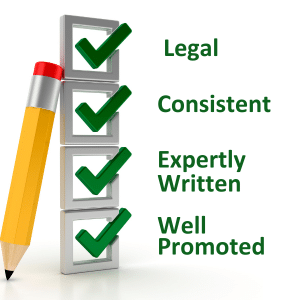
Consistency is the next step in proving you’re worthy of consideration. If you create expert content regularly, they will start to take notice.
Write two expert pieces of content weekly for a year, and you’ll have done something very few businesses can compete with. Committing to showing up regularly with high-quality content is far beyond most people’s level of dedication.
This could work on its own, but you’re a much more intelligent business person than that, so instead of waiting for the search engine to notice your dedication, you’ll be promoting your expert content on social media, in your newsletters, and to your list of past and present clients.
We know that social media directly influences rankings and will help you move up the SERPs more effectively than a content SEO strategy for your blog alone.
What Makes You an Authority?
So, you’ve created expert levels of content consistently for a decent amount of time, but are you an authority?
Well, no, not until your message starts to get around in the right circles.
This means that you show up in other respectable outlets.
This can mean that you guest blog for another site, you could appear on talk panels, in YouTube discussions with other experts and talk about your subject. Then there are podcasts and various forms of local and national media, such as print and TV, all of which have online outlets to promote their latest news.
Creating expert content will certainly get you ranked on Google if you do a good enough job for long enough.
Become an authority in your niche and feature around the web and media; that journey will be much shorter.
It should also be noted that linking to other official and authoritative websites for reference, facts, and statistics can also help improve your authority. Linking to external sites demonstrates that you’re researching the subject you’re an expert in. You’re also showing Google and your audience that your content is not just full of your opinions.

A Quick Look at On-Page SEO
On Page-SEO is not too difficult to figure out, and there aren’t too many things you’ll need to worry about. I’ll touch on each of the main points, but this is perhaps one of the most straightforward elements of SEO to get right.
Here are the main points:
- Headings (H1, H2, H3, etc.) – Your main title and sub-headings break your content into manageable sections, making it easier to consume.
- Title Tag – Appears in SERPS and should be less than 60 characters and describe your content.
- Meta Description – A short summary of your content for SERPs should be under 155 characters.
- Image Optimisation – This is also Technical SEO but overlaps with On-Page SEO since the image’s file name is also relevant. Compressing the image and using the best format (webp) also helps search engines crawl the page since the size is reduced.
- Image Alt Tags – A description of your image for the search engines to understand its context.
- Internal Links – Links to other pieces of information on your website.
- External Links – Links to information on other websites.
Depending on the platform your website is built on, you’ll find the various on-page SEO elements in different locations. Use your website host help pages or support to get more information. If you’re a WordPress user like me, using a Plugin such as Yoast will simplify this process. Yoast will also tell you if you’ve missed anything and show you where. A convenient tool for sure.
Headings
Your H1 heading will be your main title and should contain your focus keyword. Your keyword should also appear in the first 100 words of text and in your meta description. If your content is long-form, then your subheadings and the analysis by Google’s AI will tell them what you intend to rank for. If your content is short, you will need to seed your keyword and its variations throughout your post.
Title Tag & Meta Descriptions

Your Title Tag and Meta Description will appear on the results pages of Google and other search engines. This is essentially your clickbait. You want people to click your link and read your content, so make it compelling. Just ensure that you match the intent of why someone will click your link and what your content is about.
Bait and switch is the term for not getting what you expect when you click a link. Google will penalise you for that and quickly drop you out of the rankings. This is primarily because your time-on-page stats will decrease and your bounce rate will increase, but it could also be because you’re more likely to be reported.
Image Optimisation
Optimising your images can be automated but will require a plugin or service subscription. Creating your pictures in the correct size and format as you design them will save time optimising later. However, many CMSs operate better with various thumb-size copies of your images; this isn’t always automated, though it can be with the same caveat as the image optimiser.
Adding alt tags is a manual process, but it’s another opportunity to use your keywords to help Google understand your content. This seems like a prime candidate for AI assistance in the not-too-distant future.
Internal & External Links
Internal and External links are essential for SEO. Internally link to other related content to help your readers on their journey. Link to external content to demonstrate your keeping your reader’s best interests at heart. You can link to services, reports, surveys, other expert content, and anything else that might be relevant to your readers. The more authoritative the site you link to, the better.

Stepping into the Realm of Off-Page SEO
While your on-page SEO will help Google understand your content and what you intend to achieve, the off-page SEO will ultimately determine if you can compete effectively with other content creators.
Part of your credibility is determined by others’ willingness to reference your content. This is essentially how many backlinks you get from other authority websites and shares from your readers.
Building Bridges: The Power of Backlinks
All things being equal, between 2 content creators, the backlinks will determine the winner. You’ll rank higher if you can get links to your content on more authority sites than your competitors. The higher the authority of the backlinking site, the better.
One super high-quality link to your content will do more for your ranking on Google than a million low-quality links. In fact, a million low-quality links are more likely to get your website blacklisted than ranked.
Of course, what you’ll be aiming for is a consistent level of growth in your backlinks over time from authority sites, your website visitors sharing your content, and links from social media.

Any suspicious activity will have Google’s algorithm flagging your content and potentially downrating your listing. If the activity checks out, for example, you appear on the local news, your website visits 10 X’d, and your social media blows up for a few days, you’ll get rewards from Google.
If, however, you paid a few quid to some lovely young man on Fiverr who said he’d get you on page one of Google with lots of “genuine” backlinks to your content, then you might see your SERPs ranking disappear altogether.
Social Signals and SEO: Friends or Foes?
It’s official: social media and SEO are good friends. Even if the traffic to your website is coming via paid ads from Facebook, for example, it will still potentially boost your rankings on Google. Of course, all the other elements need to be there as well. Amongst other things, time-on-page, low bounce rate, likes, comments, and sharing. But if everything else is good, social media traffic will boost your Google rankings.
There was a time when Google denied any link between traffic from social media and your rankings, but thanks to SEM tools such as SEMrush and Ahrefs, we know that it is definitely 100% an influencing factor.
Social Media is important for your content goldmine to flourish. I cover how to do social media well in my book as well. Check back for more blogs about social stuff; they will get here. There’s no avoiding it.
The Reputation Game: Brand Mentions and SEO

Of course, your brand reputation online is incredibly important. Unfortunately, there is no way to avoid the odd poor review or a troll or hater jumping on the bandwagon. However, you can manage it, but only if you know about it.
Using a brand management tool can help you find anywhere that your personal name, branded services, or company name/brand is mentioned.
Several tools will help you find mentions of you and your brand. SEMrush and Ahrefs are both capable of this; here are some others that you might try:
- Awario collects all mentions of your brand from social media, news, blogs, and forums. It provides real-time mentions, and you can also see past mentions in its history section.
- Locobuzz offers social media listening and monitoring capabilities to improve your brand presence on social media and achieve your goals. However, it’s not explicitly mentioned whether it monitors forums, blogs, YouTube, etc.
- Mention is a comprehensive tool for monitoring your brand’s online presence. It’s particularly good for Facebook monitoring.
- Brand24 is a monitoring tool that helps you track and engage people talking about your brand.
- SproutSocial is a social media management tool that allows you to find, track, and manage your brand mentions.
- BrandMentions keeps an eye on your brand, tracks mentions of your brand and helps you engage with your audience.
- Google Alerts is a free tool where you can set up email alerts regarding your brand and use Google search commands to track brand mentions yourself.
If you’re just starting out, Google Alerts will be the best place to start; it can be used to find the latest alerts no matter what stage you’re at. If you have been around for some time, you’ll need a tool to search the web for your name and brands.
As always, which tool is right for you depends on your business needs and budget. Do your research, talk to your peers, get recommendations, and then check your chosen tool is fit for purpose.
Your brand and trustworthiness will be paramount in building a reputation for being the go-to expert in your field in your area. Please don’t leave it to chance.
Digging Deeper into Technical SEO
Technical SEO is about where your website is hosted, its capabilities, and how it’s built.
If your website is user-friendly and easy to use, the search engines will also like it. Of course, there’s a little more to it than that; isn’t there always? So, let’s check out what you need to know.
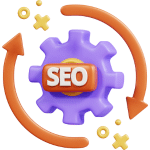
The World Wide Web: The Importance of Site Structure
We’ll start with the structure of your website since that is what will most directly translate into good SEO. Your site structure is the layout of your website and the ease with which you can navigate between relevant sections. If it’s easy to navigate for people, then the crawlers will like it, too. To improve your site structure, you should use a logical URL structure, intuitive menus, and breadcrumb trails so you can see at a glance where you are.
Crawlers, Indexing and The All-Important Sitemap
Crawlers are what the search engines use to find out about your website. They work as you might expect by following the links on all of your menus and any links they find on a web page and keep going until they’ve followed every link they can find.
A way you can speed this process up is to provide a sitemap, essentially making the process more logical. Ensuring that each page is canonicalised will reduce the crawl budget used in indexing your site, reduce the time spent on duplicated content, and allow your more important pages to be crawled.
Crawl budget is unlikely to be an issue if you’re getting started, but it will be worth keeping in mind for larger sites that add new content and update existing content. Since the internet is already gigantic and is growing at an ever-increasing rate, the time and resources available to crawl every site are limited. Therefore, making your website as technically sound as possible will maximise the effort spent crawling it and give you the best return on your actions in maintaining it.
Website Speed: More Than Just Convenience
The speed of your website is essential. Many studies show the correlation between website speed, conversion rates, bounce rates, and a visitor’s expectations.

For example, the expected load time of any website is expected to be 2 seconds or under. And what do you think the average load time of a website on Page #1 of Google is?
If you guessed under 2 seconds, you’re right. It’s actually 1.6 seconds on average. That means some will be much quicker, and you’ll have a few outliers at 3-5 seconds.
Most studies show that the longer your website takes to load, the more whatever you’re measuring reduces. I’ll let you get creative and try a few Google or AI searches about the effect of website speed on your leads, page depth, conversions, etc., for a change. It’ll be enlightening. Give it a go.
Here’s a starter for you if you’re not sure what to search for (click it ✔):

Ultimately, if the average speed of a website on Page #1 of Google is 1.6 seconds (which it is right now), that’s what you’ll want to aim for. So, how do you do that?
Simple first steps to excellent site speed
You can improve your site speed using a Content Delivery Network (CDN), optimising your images, using a caching plugin, and minifying your code.
Many plugins will help you do these tasks if you’re using WordPress. For other platforms, it may be more of a challenge. However, some more prominent companies, such as Cloudflare and AWS Cloudfront, will help optimise images. Cloudflare has an Auto Minification option, and CloudFront has a Gzip option for compressing code, and Google’s CDN will also help optimise your site.
There are dozens of other CDNs you might be able to utilise, which will help speed up your website. Your current website host may have a CDN, so check there first. It might be the easiest to implement.
SEO and User Experience: The Crucial Intersection

One thing I haven’t mentioned yet in the technical SEO overview is mobile optimisation. This is another crucial aspect of creating a usable website.
There is no point in designing a flashy website that looks amazing on a desktop but doesn’t look so great on a mobile phone or tablet.
The Mobile Revolution: Responsive Design in SEO
Creating a website with Mobile First Design is becoming the norm. It’s not surprising when you consider that 55% of traffic to your website will be mobile, which is predicted to continue to rise over the next few years.
Personally, I find nothing more annoying than trying to buy something from a site on my phone, and a page won’t autofill, or my password manager can’t enter the password or my card details because the page is using some weird pop-up or an overlay that messes something up.
If your website doesn’t work well for mobile visitors, you’ll lose a lot of business. It’s not just e-commerce sites that are affected, but every website.
- Using a fancy pop-up that gets people to subscribe to your newsletter, but they can’t close it because it doesn’t fit the screen?
- Bye-bye lead, hope you come again. (Not likely. 😐)
- Using videos in your blog that autoplay but take 10 seconds to buffer before they start playing?
- Bye-bye lead, hope you come again. (Not likely. 😞)
- Using a fancy slider on your Home Page with several high-resolution images that take several seconds to load?
- Bye-bye lead, hope you come again. (Not likely. 🤷♂️)
If you’re not optimising for mobile, you are missing out on a lot of prospects. They won’t stick around. The data doesn’t lie. You need to check your site from your mobile. It’s easy to do, so make certain yours works as you think it should.
A Matter of Seconds: Page Load Times and SEO
It’s not just the annoyance of slow-loading websites. When loading your website on a mobile device, it may be on a pay-as-you-go plan or have a low monthly data cap on a contract. Nobody will thank you for taking up 50, 60 or 100 Mb of their data plan because you didn’t optimise your website.
When you optimise your images and code, use a static cache, and set up a CDN to deliver your optimised website, you increase your site’s speed and reduce the amount of data transferred, making your website much more accessible to all platforms.

The quicker your site – the better. Once you’re around the 1.5-second page load mark, there will be diminishing returns for each 10th of a second you shave off. Don’t get too caught up on it since you’ll take your eye off of other just as important jobs that need attending to.
The Experience is What Counts: Making Your Website Open to All
It’s not just about your content; it’s about everything working together harmoniously and making everything seamless. The user experience (UX) is high on your list of things to get right.
To ensure that you’ve got everything covered, anything you can do to aid with accessibility will also help your SEO. Google favours accessible content, assuming everything else is executed at a high standard.

In fact, if you’re following my content goldmine creation strategy, you’ll have already started since headings and sub-headings are helpful to people with accessibility needs, as are lists and bullet points.
You can go a step further and include the tabindex attribute, which allows you to control the order in which keyboard users tab through the elements on your page. This can be useful for ensuring that keyboard users focus on the most critical aspects first.
You’ll already have your alt tags on your images, allowing screen readers to describe your pictures aloud since we cover that as part of optimising images. You can also check things like font sizes, white space, navigation and your call to action.
Regarding UX, nothing should be too much trouble since it will ultimately pay you back with longer visits from the traffic to your website. This is a game changer for helping your pages rank on Google.
Local SEO: The Key to Unlocking Property Success
SEO is an unfair advantage for any local business that cares to take advantage of it. You do not need to have your content show up for the entire UK. Besides, that isn’t easy because the keywords are highly competitive. You likely won’t have the time or money to compete at that level.
Local SEO rankings, on the other hand, are much more attainable. There is much less competition for local terms. Some research will reveal precisely how many companies are targeting [Your Service] in [Your Area]. Still, it will be a tiny fraction of the number of people trying to be a national brand or working in other areas.
The Power of ‘Near Me’: Capitalising on Local Searches
Google loves people who create expert content for people specifically in their area because it is very underserved, and the people who get the local results are much happier because it is more relevant to their query.

Online Directories: Your New Best Friend
If you have any online directories that cover businesses in your area, you need to be in them. While there are a few caveats, the more business citations you have online, the better.
Business citations that you should already have are:
- Google My Business
- Bing Places
- Yell
- Yelp
- 192.com
- Thomson Local
- FreeIndex
- TouchLocal
- Cylex UK Business Directory
- Opendi
- Business Magnet
Most, if not all, of these directories offer business upgrade options to increase your visibility. Do your research and find out what the go-to directories are in your area. Once you know what people are using, you can show up where people are looking.
It’s worth noting that when searching for directories to appear in, you should only use reputable listings. Be aware there are many spam directories that will add no value to your business or your SEO efforts.

There are paid services available that list you on dozens of directories, saving you some time. One of the big names is Yext, but you’ll probably need to speak to them to get a price. Their site is not as transparent on pricing as I’d like. Look around and see if your VA or marketing agency has citation management options. Also, check your website host; many also offer this as a service.
Whilst having a few dozen business citations won’t rocket your content to the number one spot on Google, it’ll sure help you establish yourself as a trustworthy business that plans to stick around. That benefit alone is worth the effort. It will also be a big plus for any prospects looking you up online who find you everywhere they look.
Reviews and Ratings: The Currency of Trust
This is another area that won’t have you shooting to the top of Google search, but it is a significant part of your SEO.

Where you choose to focus your reviews and ratings will depend on where people already utilise them. Much like the business directories, you want to show up where people look.
You could do worse than focus on Google and Facebook reviews to get started since they both show up when people search for businesses on their respective platforms.
Check for integration options for your website as well. If you use Google, for example, you can embed a Google map into your business and share your Google reviews. There are, no doubt, other options for Google and other review sites to easily embed your hard-won reviews.
Social proof is seen as being almost as relevant as a recommendation from a friend, so you really need to ensure yours are visible.
Measuring Success: SEO Analytics
I imagine nearly everyone in business has heard the phrase about knowing your numbers. It’s no different for SEO. It’ll take much longer to grow if you don’t track how well your content is doing and why.
Navigating the Maze: Introduction to SEO Metrics
SEO can be an in-depth, mind-scrambling journey into an abyss of analysis.
It doesn’t need to be, not when you’re starting out. It’s simply where do your website visitors come from, how long do they stay, and do they do anything else. 🤯
Where does your traffic come from?
At the start of your journey into expert content creation, most of your website traffic will be from your social media and email list.
You’ll see which social platforms are sending the most traffic, and you can see which posts and, therefore, which headlines are doing the best. You may want to use UTM codes in your links to help with this. See the “Automate Your Lead Generation and Skyrocket Your Sales“ post.

Your organic traffic will grow as you get established with Google. This is where you can start to see what keywords were used when your content was found.
As your organic traffic grows, you’ll see where you’ve done the best job matching your content with the searcher’s intent.
How long do your visitors stay?
The time on page stat is one of the most important stats you must work on. If you can write a 30-minute post (to read that is, not write 🤨) that’s about 6000 words, and you can get your time-on-page stats up, you’ll be well on your way to a big bump in your organic traffic.

If, on the other hand, very few people read your long posts, you need to find out why. A high bounce rate with medium to low time-on-page means your content is missing the mark. Whether it’s boring, poorly laid out, off-topic, or gives the answer early on, and the rest of the content doesn’t add value, you need to understand it to do a better job on the rewrite.
If you’re using many ads on your page, have a bad website design, maybe very bright colours or your site isn’t mobile-friendly, it might be a more straightforward fix.
One of the benefits of using long-tail keywords in your content headings is that it’s much easier to match a searcher’s intent than it is for a short keyword. This is why I help you start your content goldmine by answering specific questions.
Seeing Results: The Art of Reading Analytics
I’ll make this brief since I added a section in another post, Automating Your Content Goldmine, called Automated Analytics: Data-Driven Insights at Your Fingertips. I may (almost certainly will) create an in-depth post on analytics in the future. Stay tuned for that.
Using a tool such as Google Data Studio will convert the data from your analytics into simple graphs, charts and at-a-glance viewing, rather than having to figure it out yourself each time. You’ll still need to understand enough to configure the studio, though.
It’s worth educating yourself and working out the essential stats for your business in the long run since you will use them to help you improve your content. If it all remains Greek to you, assuming you’re not a Greek speaker 😎, and your interest only focuses on the basics we covered in where your traffic comes from and how long they stay, then you’ll miss out on many opportunities to optimise your content and website.
There’s nothing wrong with starting at the beginning and working through the stages of competence.
If you’ve not encountered that term before, here is the breakdown of how we learn anything new.
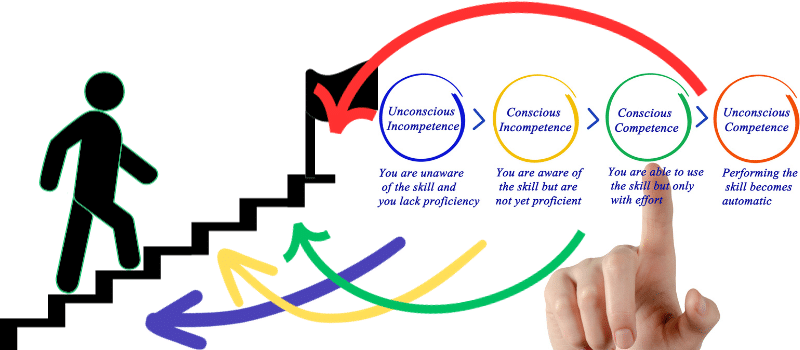
You’ll have some time since your content goldmine will take time to grow and mature.
If that’s not for you, then a VA or an agency can speed your journey into unconscious SEO competence levels of excellence for your content goldmine.
SEO Return on Investment (ROI): Making the Invisible, Visible
The ROI from your content goldmine is slightly different than working out if a paid ad is successful.
Your content takes:
- time to create
- time to edit
- time to post
- time to create and edit video
- create images for the post and video
- create social media posts
- managing social responses
- creating lead magnets
- creating follow-up email content
And then there’s the cost of any tools you’ve subscribed to for your content creation, automation and monitoring, as well as any additional labour costs from outsourcing.
Once you have a handle on that, you can total the value of the new clients from your organic leads and divide it by the cost of the time, tools, and outsourcing. That will give you your cost per lead, prospect, and new clients.
As your content goldmine matures and grows, it will bring in ever more leads on autopilot and significantly reduce your cost per lead.
How you’ll factor in the value of your increased stature as a respected property professional, all the goodwill from helping the hundreds or thousands of people who utilised your content but never became a client, and the effect of the trust and rapport you’ve built with leads, clients, other local businesses and your peers, well, it’s beyond the scope of this post and my skills.
What I’m trying to tell you is simply this.
Building a content goldmine will take time, effort, and money. The rewards, once you start to see them, will become invaluable.
Looking to the Future: SEO Trends for Property Professionals
Even though SEO has been around for a quarter of a century, it is far from finished in its evolution. The future and the development of SEO is, in my opinion, only going to improve. Let’s look at why.
The Rise of Voice Search: Adapting Your SEO Strategy
Voice recognition is already excellent. Your smartphone’s power is incredible when you look at where we started with IBM PCs in 1981 and the internet in 83. We take them for granted, but what they allow you to do has changed the face of society.
Now that we can just ask our smartphones what we want to know, AI will recognise our accent, automatically find the answer, and read aloud what we want to know.
This is becoming the norm. While the technology still isn’t perfect, it’s getting better.

Since people don’t tend to speak as concisely as they write, long-tail keywords with natural language influences become more important. Since AI is already cataloguing your content, keywords, and meaning, by using natural language to emphasise your keywords in your content increases the likelihood that your content will stand out to the algorithm.
Artificial Intelligence and SEO: A Match Made in Heaven?
We already know that the algorithm is using AI and that improvements in AI will further improve the results pages on all of the search engines. Where AI will almost certainly feature more heavily is on the creator side.
AI writing assistance options are already popping up in SEO tools to help with headlines and alternate keywords. I can’t imagine it will be too long before AI gets more hands-on.
AI is already helping with SEO On-Page analysis, Technical SEO analysis, Backlink research, keyword research, and content analysis.
How long before it can interface with your website’s host and the platform your site is built on and make the required changes and improvements? AI can already create a website from scratch, and as that technology evolves, building in SEO essentials from the ground up will be child’s play once the tech is fully developed.
Future-Proofing Your SEO: Staying Ahead of the Curve
Naturally, keeping up with the development and implementation of AI on the SEO front will help keep you ahead of your competitors. However, the real advantage will still be creating better content than everyone else. Seems obvious, and the evidence is out there for anyone who cares to look.

We know that SEO doesn’t work in isolation. It needs expert-level content delivered in a simple-to-consume format with huge value and to be as close to the problem the searcher wants to solve as possible.
A content goldmine will still be the best way to utilise all of the advantages SEO brings to the table. Without it, you’ll just remain another one of the dozens, if not hundreds, of indistinguishable property professionals in your area who will be treated no better than a commodity.
Just in case I didn’t quite make my point – the best SEO strategy on the planet will still not get you to the #1 spot on Google if your content is crap.
Seizing the SEO Advantage for Property Professionals
If you want to dominate your local market, you now know the importance of SEO and the expert content it needs to work. Undoubtedly, being seen as an expert in today’s business world requires you to publish.
Reflecting on the SEO Journey: Key Takeaways
If you want to attract your perfect prospects without spending a fortune on ever-increasing ad costs, you know that getting to the coveted top spot on Google is the best way to achieve that.
You can achieve it with some planning and dedication without betting your business on the outcome.
Here are the takeaways:
- When you work in a targeted locality, SEO is less competitive and gives you an advantage over larger companies.
- Applying SEO to a website without expertly written content wastes time and money.
- Not having a plan to consistently create expert content before starting your content goldmine will hamper your progress.
- Until your content generates organic traffic from the search engines, you’ll still be using these valuable assets in emails and on social media that will help people who are already contacting or following you.
As it stands, the content opportunities in the property industry are numerous. Few property experts are taking advantage of the lack of expert knowledge being published. I aim to change that.
My book, Automated Property Leads Forever, is the first step. This is where you can get the blueprint for creating expert content that will delight your audience, keep Google happy, and boost your business beyond your competitor’s ability to keep up.
I have my roadmap for further assisting property experts as they build their content goldmines, but that’s for another time. Watch this space.
The Road Ahead: Embracing SEO for Long-Term Success
If I haven’t already made it clear, creating a content goldmine and using SEO to boost your way up Google’s rankings is not a short-term process.
If you’re thinking about giving it a go for a couple of months, maybe while things are slowing down, I can save you a lot of time by letting you know it won’t work for you. You don’t need to spend any time creating content or a single penny on the tools you’ll end up using. Not even the £6.95 on my book that will give you the blueprint for creating expert content from the outset.
If, however, you understand that expert content creation will position you as the go-to expert in your area by utilising leverage and compounding your efforts over time into an unstoppable marketing machine, then I welcome you to the growing community of property experts who understand that serving their prospects with the best information possible, with no expectation of a return, is the most sustainable use of their marketing budget possible.
If you make it about the journey, you’ll enjoy it more and stick to it for longer. Getting the top spot on Google is great, but you can’t stop there. You’ll need to keep working at it to stay there.
I would wish you luck, but seriously, you aren’t going to need it.

Wrapping Up
At the top of this post, I suggested that by the time you got here, you’d have a pretty good idea why you might have spent a lot of time and money on paid ads and not really got anything out of them.
Paid Ads
Like organic content, ads work best when they match the searcher’s intent or the clicker (conversion) in ad terms.
This is why every ad course you’ve ever taken focuses on testing audiences, headlines, creative images, and the call to action. It’s all about discovering what works and what doesn’t as quickly as possible. Every impression, click, or conversion is costing you money.
This is where organic traffic has a massive advantage. Once you start getting “free” traffic from Google, you can test everything you would for an ad with your content, emails, social media, and any other outlet you might use. The difference is that your outlay remains the same whether you get 500, 50,000 or 5 million visitors.
When “trying out ads, “most people don’t test nearly enough. Yes, you can start at $10 a day and 3 or 4 ad sets, but you’ll do a lot better if you spend $100 a day and have dozens of tests running until you can really dial in what works.
The problem is that testing dozens of ad sets also takes time and effort to manage effectively. If you don’t know what you’re doing, you’ll miss opportunities, shut down the wrong ad sets, not leave ads running long enough and a dozen other mistakes. All the while, you’re costs will be shooting for the stars with, all too often, precious little to show for it.
“Free” Traffic

You may have noticed that I mentioned “free” traffic a few times. It’s simply a reminder that while attracting organic visitors from Google and the social platforms costs nothing, there are time and monetary costs of tools that, whilst not essential at first, are required to speed up the journey to the top of the search results.
People often refer to organic traffic as “free”; this could not be further from the truth. Your expert content has a lot of value, which is why I chose Content Goldmine to describe what you’ll create. Creating it isn’t free, so anything you gain from it has an ROI.
It is value from you to your prospects and clients. It’s valuable to you as a tool to get more clients. It is valued by search engines and social media platforms as a way to keep their visitors happy and satisfied.
Nothing with that amount of value can be said to be truly free.
The Best Time To Start
Like planting a tree and buying a property, the best time to start was 20 years ago; the second best time is now.
I’ve tried to make the barrier to entry for creating a content goldmine so low that you’d be crazy not to take me up on it. For just £6.95, my new book gives you everything you need to know about creating expert content for your perfect prospects.
Go and grab a copy of Automated Property Leads Forever and take advantage of an industry full of property professionals who haven’t yet found out how to leverage their knowledge hundreds of times over by writing it down properly, once.
Time is ticking. This opportunity won’t be as easy to take advantage of forever. Not if I’ve got anything to do with it. 😉
Thanks for reading this far; let me know your thoughts in the comments. Did I miss anything? Do you have anything to add? If you’ve got any questions or aren’t clear about anything, ask away.


